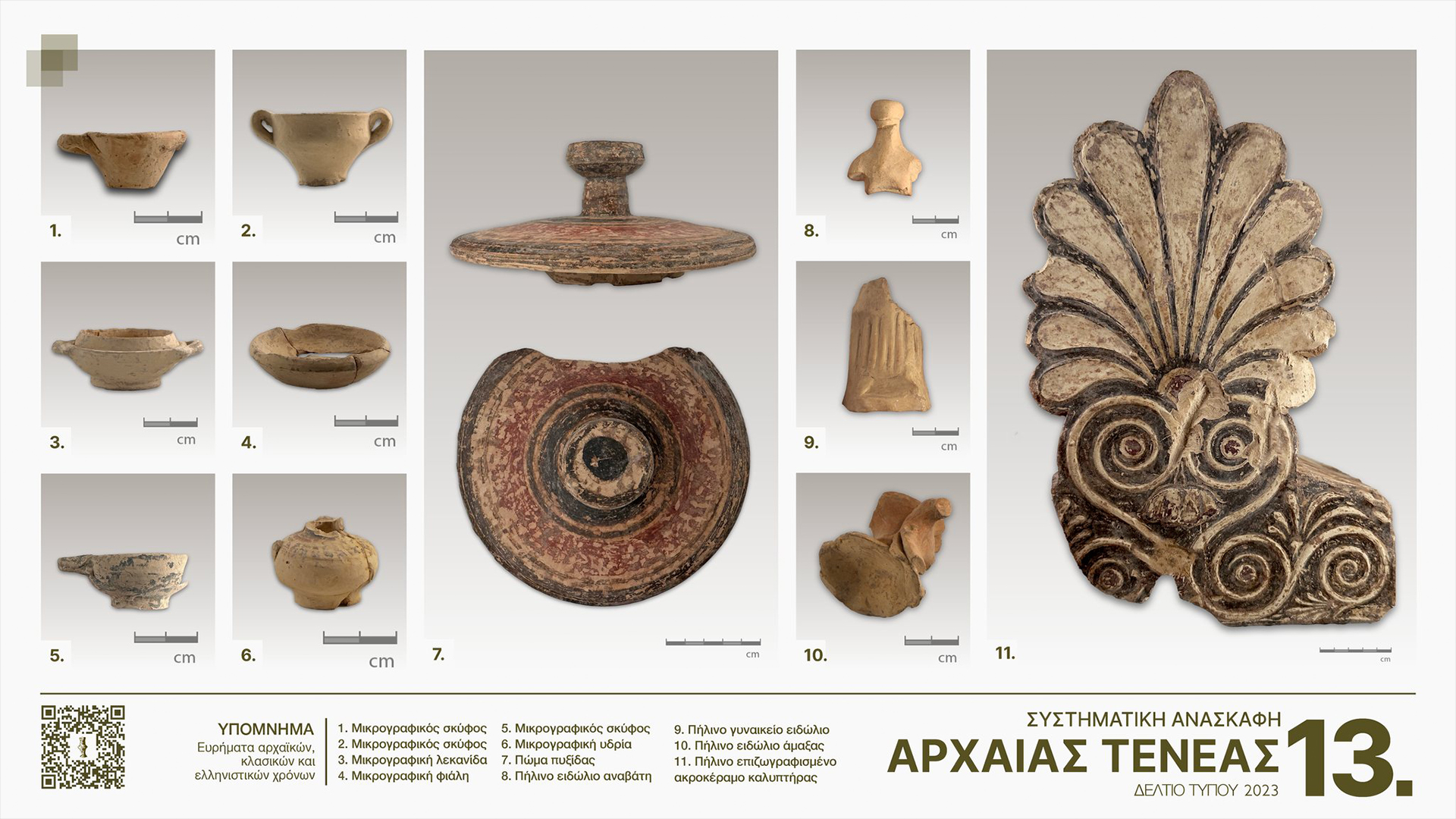
Archaeologists in Greece have unearthed part of one of the largest hydraulic projects from the ancient world: an aqueduct that the Roman emperor Hadrian built to supply water to the city of Corinth.
The remnants of the aqueduct were discovered in October during excavations at the archaeological site of Tenea, an ancient Greek town a few miles south of Corinth, according to a translated statement from the Greek Ministry of Culture and Sports.
Hadrian, who ruled the Roman Empire from A.D. 117 to 138, ordered the aqueduct built to carry water for more than 50 miles (80 kilometers), from Lake Stymphalia in the hills to the west of the city.
Aqueducts were already known in Greece, and Hadrian also had one built to supply water to Athens. But his aqueduct to Corinth is mentioned as a monumental work by ancient writers.
The rediscovered section is just over 100 feet (30 meters) long and runs from north to south alongside a river. It consists of a channel covered by a semicircular roof, both made of stone and mortar.
Related: Vast subterranean aqueduct in Naples once 'served elite Roman villas'
The exterior walls are more than 10 feet (3.2 m) high, and the interior space where the water flowed is about 2 feet (60 centimeters) wide and 4 feet (1.2 m) high.
Rare coins



Corinth was one of the great cities of ancient Greece. It is about 40 miles (70 km) west of Athens, on the far side of the great isthmus that connects the Peloponnese Peninsula to the rest of Greece.
The archaeologists also announced the discovery of a building complex in Tenea dating to the late Archaic period (roughly the eighth to fifth centuries B.C.) until the Hellenistic period (roughly the second and first centuries B.C.) that included places of worship for Greek heroes or gods.



They also found 29 rare silver coins alongside a portable clay altar, as well as a miniature vase and a figurine of a horse and rider. The coins date to the late sixth century B.C. and include some of the rarest ancient Greek coins ever found, including three silver staters minted at Olympia during different ancient Olympic Games, which was then a religious festival celebrated every four years.
The coins were linked to the religious use of the site, evidence of which — including female and animal figurines — was found during excavations in 2022, according to the statement.
The latest excavations have also uncovered structures built during the early period of Roman rule, after the first century B.C., including furnaces and an olive press, a Roman-era cemetery with elaborate stone tombs, and the remains of a prehistoric settlement thought to be from the Bronze Age, roughly 2600 to 2300 B.C. — long before the legendary fall of Troy, which is supposed to have happened around the 12th century B.C.
Artifacts from this earliest settlement included obsidian tools, animal figurines and large amounts of fine pottery. Much of the pottery was imported from the Greek areas of Aegina, Attica, Argolida and Corinth, showing the trading contacts the settlement had established with these areas, the statement said.







